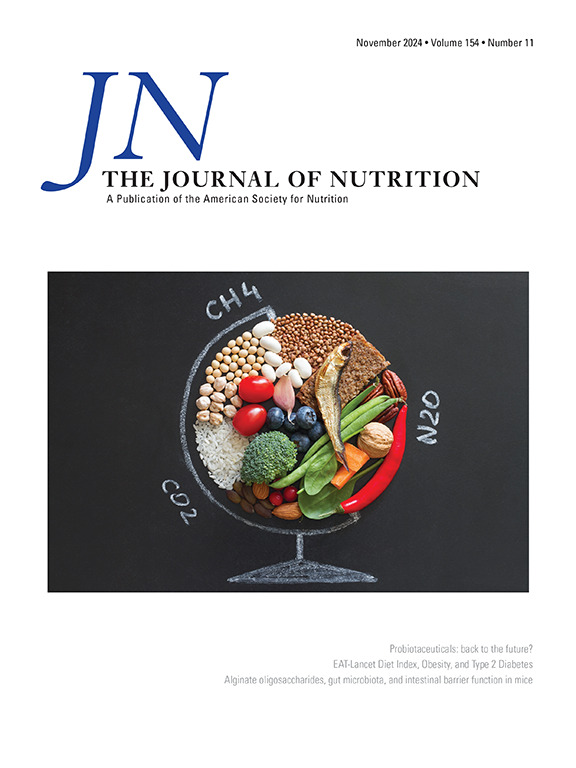Preparation Time Does Not Reflect Nutrition and Varies Based on Level of Processing
IF 3.8
3区 医学
Q2 NUTRITION & DIETETICS
引用次数: 0
Abstract
Background
Convenience is one of the top 3 drivers of food choice. The choice to consume nutrient-dense foods may rely, in part, on how much effort is required to obtain and prepare them for consumption.
Objectives
The objective of this study was to compare the time required to prepare 15 sets of meals with similar foods and nutrient content but different levels of processing, defined according to the Nova system.
Methods
Each menu [the more- and less-processed Western menus (LPW and MPW)] was divided into meal components and/or recipes. Two research staffers independently tracked the amount of time kitchen technicians used to make each step of each menu. Times were recorded to the centisecond and mean times between the 2 timers were utilized as the final times for analysis.
Results
For each day, the total time required to make the LPW exceeded the MPW by amounts ranging from ∼90 min (day 5) to 9 h (day 1). The LPW had a 203% longer preparation time than the MPW ( = 3.0323; 95% confidence interval: 1.86483, 4.93065; P = 0.0002). When only active preparation time was considered, the differences in time needed to make the LPW and MPW ranged from less than a minute (day 3) to over 2 h (day 1).
Conclusions
The time required to prepare food is not a reflection of its nutrient value. Foods that require more time to prepare such as homemade bread and dried beans may be considered less processed on the Nova scale but provide similar nutrition to “ultra-processed” options such as bread purchased ready-to-eat and canned beans.
准备时间不反映营养,并根据加工水平而变化。
背景:方便是食物选择的三大驱动因素之一。是否选择食用营养丰富的食物,可能部分取决于获取和准备这些食物所需的努力程度。目的:本研究的目的是比较制作15套食物所需的时间,这些食物和营养成分相似,但加工水平不同,根据Nova系统定义。方法:每个菜单(加工程度较高和加工程度较低的西方菜单)被划分为膳食成分和/或食谱。两名研究人员独立追踪了厨房技术人员制作每份菜单的每一步所花费的时间。时间被记录到厘秒,两个计时器之间的平均时间被用作分析的最终时间。结果:每天,制作低加工西式菜单(LPW)所需的总时间超过高加工西式菜单(MPW)所需的总时间从大约90分钟(第5天)到9小时(第1天)不等。LPW的制备时间比MPW长203% (=3.0323;95% ci .[1.86483, 4.93065];p = 0.0002)。当仅考虑活性准备时间时,制作LPW和MPW所需的时间差异从不到一分钟(第3天)到超过2小时(第1天)不等。结论:制作食物所需的时间并不能反映其营养价值。需要更多时间准备的食物,如自制面包和干豆,在Nova标准中可能被认为加工程度较低,但它们提供的营养与“超加工”食品(如购买的即食面包和罐装豆类)相似。
本文章由计算机程序翻译,如有差异,请以英文原文为准。
求助全文
约1分钟内获得全文
求助全文
来源期刊

Journal of Nutrition
医学-营养学
CiteScore
7.60
自引率
4.80%
发文量
260
审稿时长
39 days
期刊介绍:
The Journal of Nutrition (JN/J Nutr) publishes peer-reviewed original research papers covering all aspects of experimental nutrition in humans and other animal species; special articles such as reviews and biographies of prominent nutrition scientists; and issues, opinions, and commentaries on controversial issues in nutrition. Supplements are frequently published to provide extended discussion of topics of special interest.
 求助内容:
求助内容: 应助结果提醒方式:
应助结果提醒方式:


